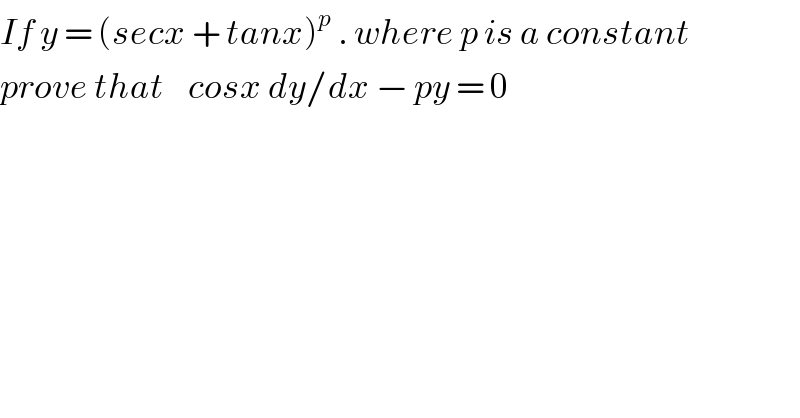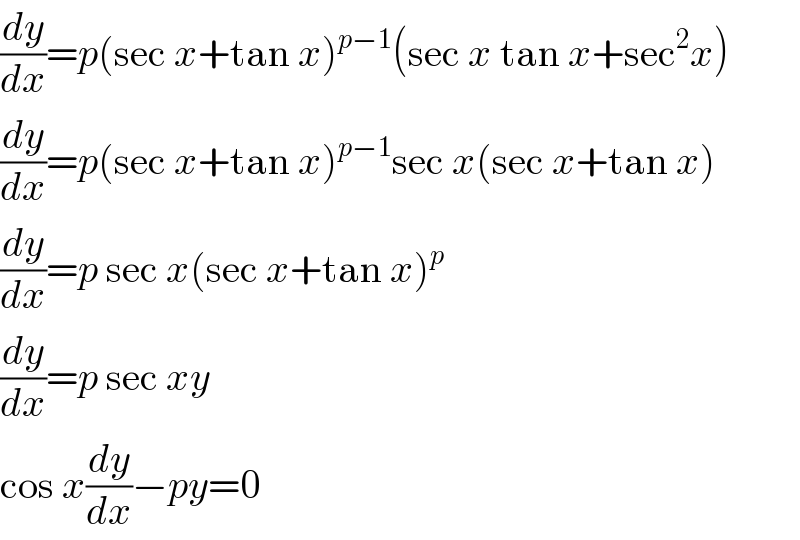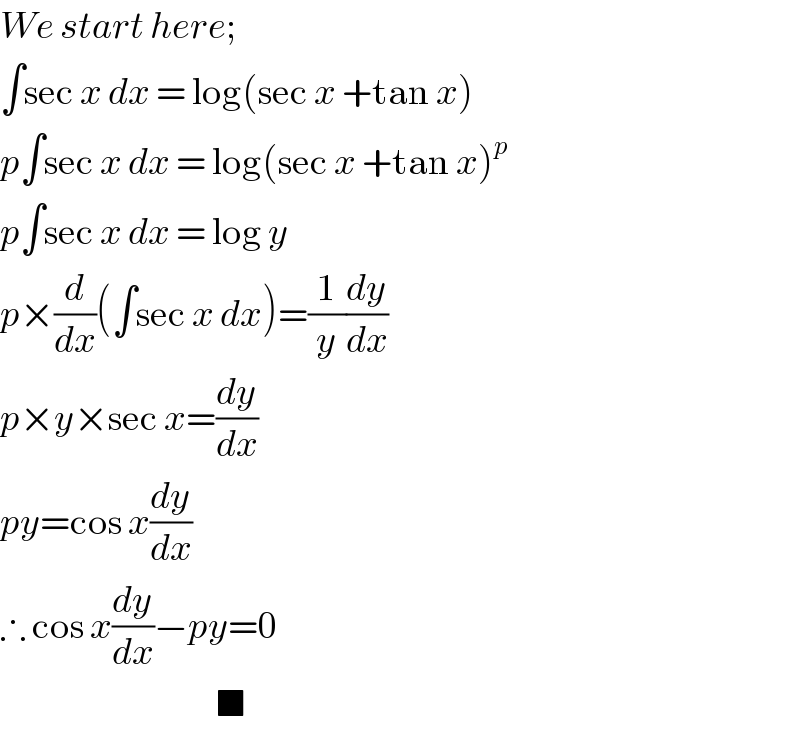
Question Number 4925 by sanusihammed last updated on 22/Mar/16

$${If}\:{y}\:=\:\left({secx}\:+\:{tanx}\right)^{{p}} \:.\:{where}\:{p}\:{is}\:{a}\:{constant}\: \\ $$$${prove}\:{that}\:\:\:\:{cosx}\:{dy}/{dx}\:−\:{py}\:=\:\mathrm{0} \\ $$$$ \\ $$
Answered by prakash jain last updated on 22/Mar/16

$$\frac{{dy}}{{dx}}={p}\left(\mathrm{sec}\:{x}+\mathrm{tan}\:{x}\right)^{{p}−\mathrm{1}} \left(\mathrm{sec}\:{x}\:\mathrm{tan}\:{x}+\mathrm{sec}^{\mathrm{2}} {x}\right) \\ $$$$\frac{{dy}}{{dx}}={p}\left(\mathrm{sec}\:{x}+\mathrm{tan}\:{x}\right)^{{p}−\mathrm{1}} \mathrm{sec}\:{x}\left(\mathrm{sec}\:{x}+\mathrm{tan}\:{x}\right) \\ $$$$\frac{{dy}}{{dx}}={p}\:\mathrm{sec}\:{x}\left(\mathrm{sec}\:{x}+\mathrm{tan}\:{x}\right)^{{p}} \\ $$$$\frac{{dy}}{{dx}}={p}\:\mathrm{sec}\:{xy} \\ $$$$\mathrm{cos}\:{x}\frac{{dy}}{{dx}}−{py}=\mathrm{0} \\ $$
Answered by Rojaye Shegz last updated on 30/Mar/16

$${We}\:{start}\:{here}; \\ $$$$\int\mathrm{sec}\:{x}\:{dx}\:=\:\mathrm{log}\left(\mathrm{sec}\:{x}\:+\mathrm{tan}\:{x}\right) \\ $$$${p}\int\mathrm{sec}\:{x}\:{dx}\:=\:\mathrm{log}\left(\mathrm{sec}\:{x}\:+\mathrm{tan}\:{x}\right)^{{p}} \\ $$$${p}\int\mathrm{sec}\:{x}\:{dx}\:=\:\mathrm{log}\:{y} \\ $$$${p}×\frac{{d}}{{dx}}\left(\int\mathrm{sec}\:{x}\:{dx}\right)=\frac{\mathrm{1}}{{y}}\frac{{dy}}{{dx}} \\ $$$${p}×{y}×\mathrm{sec}\:{x}=\frac{{dy}}{{dx}} \\ $$$${py}=\mathrm{cos}\:{x}\frac{{dy}}{{dx}} \\ $$$$\therefore\:\mathrm{cos}\:{x}\frac{{dy}}{{dx}}−{py}=\mathrm{0} \\ $$$$\:\:\:\:\:\:\:\:\:\:\:\:\:\:\:\:\:\:\:\:\:\:\:\:\:\:\:\:\:\:\:\:\:\:\:\:\blacksquare \\ $$
